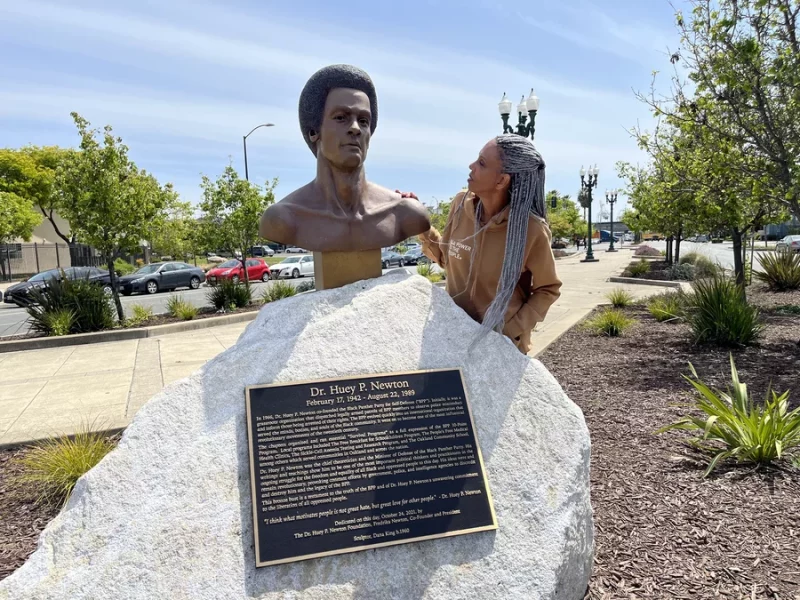The National Park Service expands its African-American history sites
Share
Explore Our Galleries
Breaking News!
Today's news and culture by Black and other reporters in the Black and mainstream media.
Ways to Support ABHM?
By John Burnett and Marisa Peñaloza, NPR

On a cool spring day, Fredrika Newton — the widow of Black Panther co-founder, Huey P. Newton — stands next to a bronze bust of her late husband. It’s situated in a wide, landscaped median in the west end of Oakland that the Panthers called home.
“The Black Panther Party is an American story, and that’s the job of the National Park Service is to tell the American story,” Newton says.
Once upon a time, former FBI director J. Edgar Hoover called the Panthers the “greatest threat to internal security.”
A half-century later, as perspectives have mellowed, the Huey Newton statue could eventually become part of a National Historical Park. Other possible stops: the former Panther party headquarters, locations of the group’s free medical clinics and free children’s breakfast program, and the spot where Newton was murdered. All of it may one day be patrolled by a park ranger in a traditional NPS flat hat.
The exploration of a Black Panther historical site is just one example of how the National Park Service is striving to incorporate more Black history into its storytelling about America. The Park Service has a growing network of national historic sites across the Deep South that recognize achievements and atrocities during the civil rights movement. But the idea of a Black Panther Party National Historical Park is singularly controversial. In 2017, the Park Service had to cancel the idea after police groups complained to President Donald Trump that the nation was commemorating a violent separatist group.
Find out more about NPS’s plan to incorporate more Black history.
Black Americans often have a complicated relationship with the outdoors, and this decision by NPS could encourage more time visiting the country’s natural treasures or connecting with history.
You don’t want to miss out on breaking news that impacts Black Americans.









Comments Are Welcome
Note: We moderate submissions in order to create a space for meaningful dialogue, a space where museum visitors – adults and youth –– can exchange informed, thoughtful, and relevant comments that add value to our exhibits.
Racial slurs, personal attacks, obscenity, profanity, and SHOUTING do not meet the above standard. Such comments are posted in the exhibit Hateful Speech. Commercial promotions, impersonations, and incoherent comments likewise fail to meet our goals, so will not be posted. Submissions longer than 120 words will be shortened.
See our full Comments Policy here.